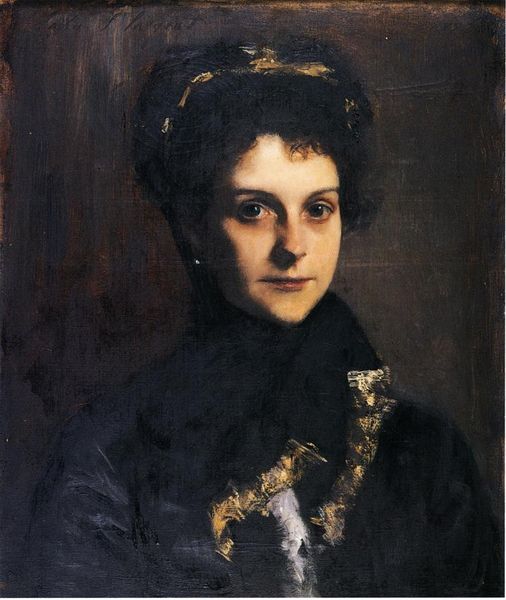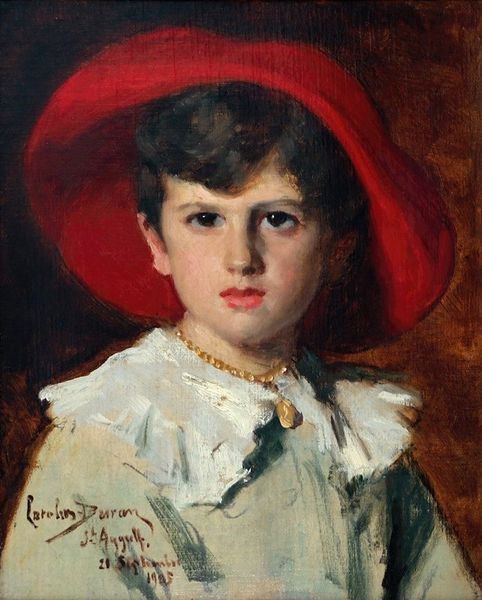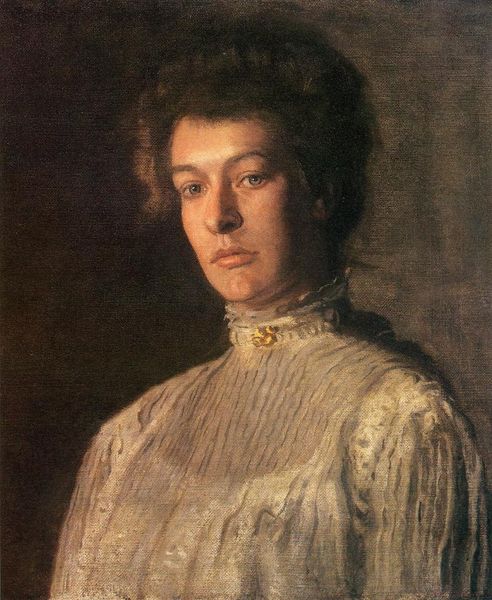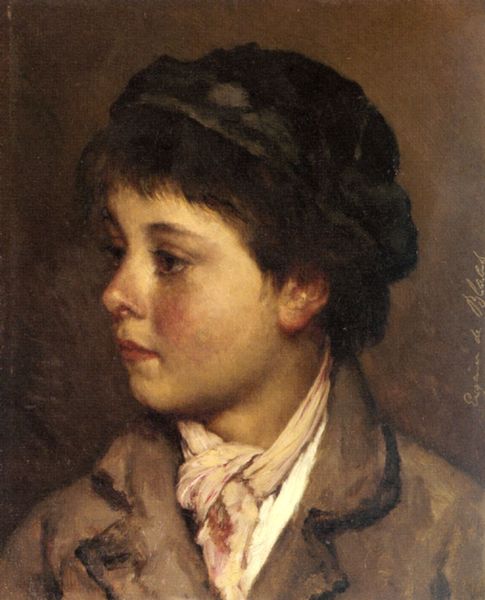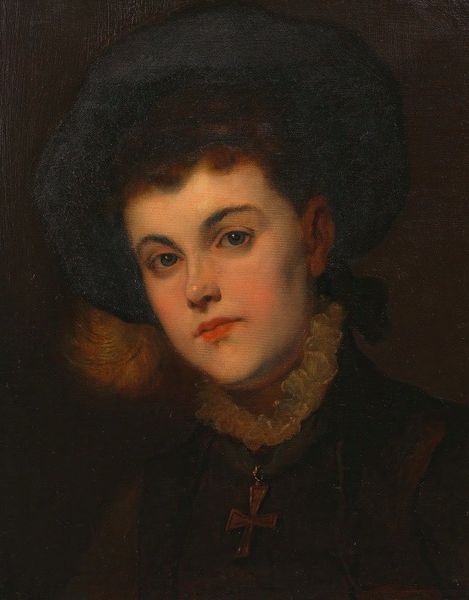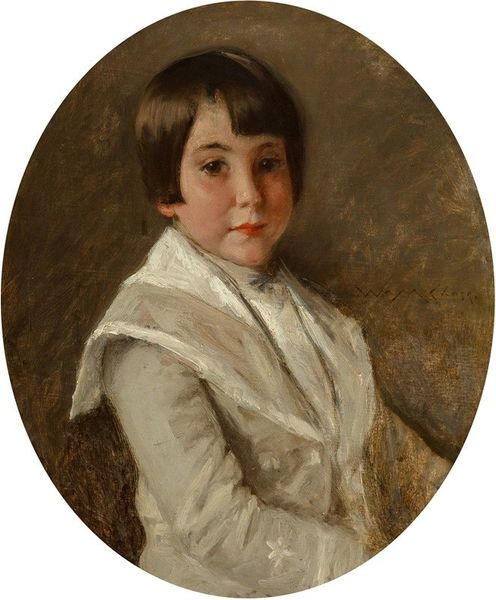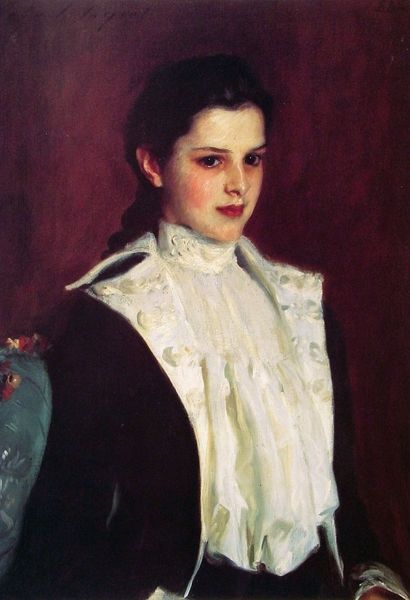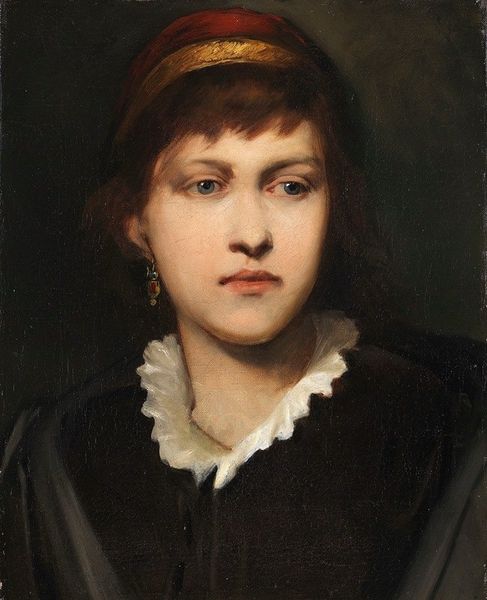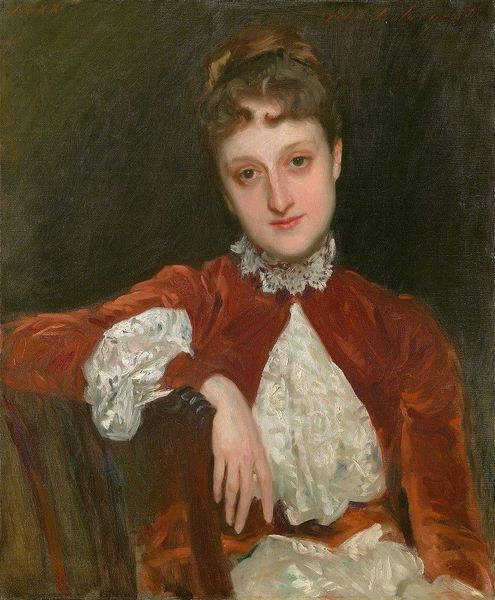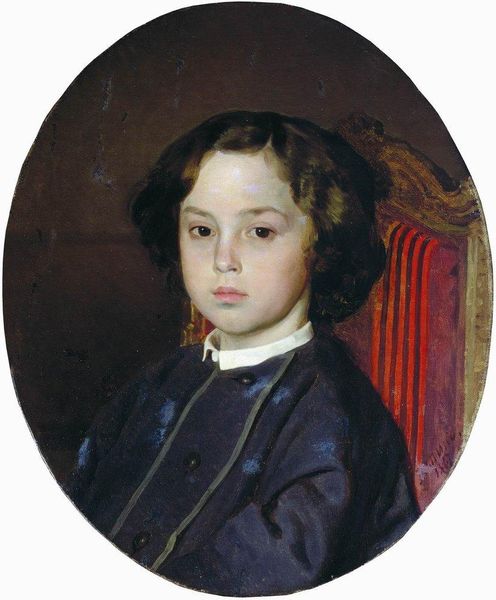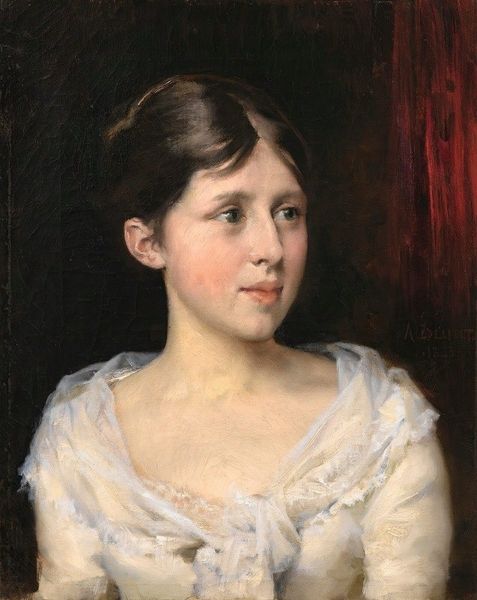
painting, oil-paint, impasto
#
portrait
#
painting
#
oil-paint
#
impasto
#
genre-painting
#
history-painting
#
academic-art
#
realism
Copyright: Public domain
Gustave Courbet painted this portrait of a young girl from Salins using oil on canvas. Courbet's thick brushstrokes give the painting a sense of immediacy and materiality. His commitment to Realism meant capturing the true texture and weight of the world. Look at how the light catches the delicate handmade lace collar and the soft fabric of her dress. The lace is particularly interesting. It represents a highly skilled craft, often associated with women’s work and domestic labor. The time-intensive process of creating lace by hand stands in stark contrast to the industrial revolution underway during Courbet's time. In the 19th century, lace became a valuable commodity, reflecting the changing social and economic landscape. Considering these elements encourages us to think about how labor, class, and consumption are subtly woven into the fabric of this portrait. It challenges us to look beyond the surface and appreciate the craftsmanship and social context that shape the meaning of the artwork.
Comments
No comments
Be the first to comment and join the conversation on the ultimate creative platform.
